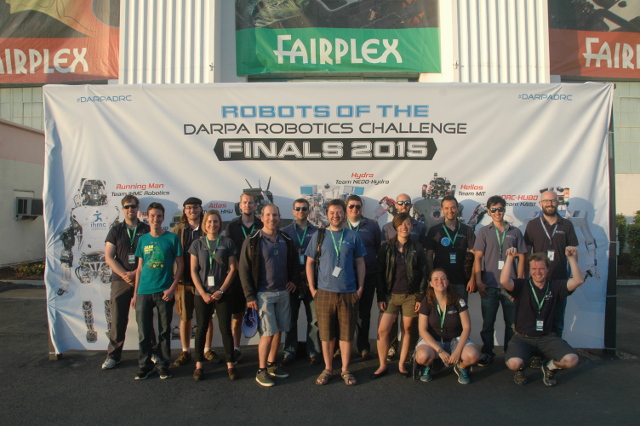
OSRF has been intimately involved in the DARPA Robotics Challenge (DRC) from the beginning in June 2012, when we started getting Gazebo into shape to meet the simulation needs of DRC teams, including hosting the Virtual Robotics Challenge (VRC) in June 2013. So the DRC Finals this past weekend was a special event for us, representing three years of work from our team.
We were especially excited to see widespread use of both ROS and Gazebo during the two-day competition. Walking through the team garage area during the finals, we saw many screens showing rviz and other ROS tools, and even one with a browser open to ROS Answers (some last-minute debugging, we assume).
We talked with several teams who used Gazebo in their software development and testing, including teams using robots other than the Atlas that we modeled for the VRC. In the post-DRC workshop on Sunday, both first-place Team KAIST and third-place Tartan Rescue discussed their use of Gazebo, in particular for developing solutions to fall-recovery and vehicle egress. That’s one of the reasons we work on Gazebo: to give roboticists the tools they need to safely develop robot software to handle unsafe situations, without risk to people or hardware.
Based on our observations at the competition and communications with team members, out of the 23 DRC Finals teams, we count 18 teams using ROS and 14 teams using Gazebo. We couldn’t be happier to see such impact from open source robot software!